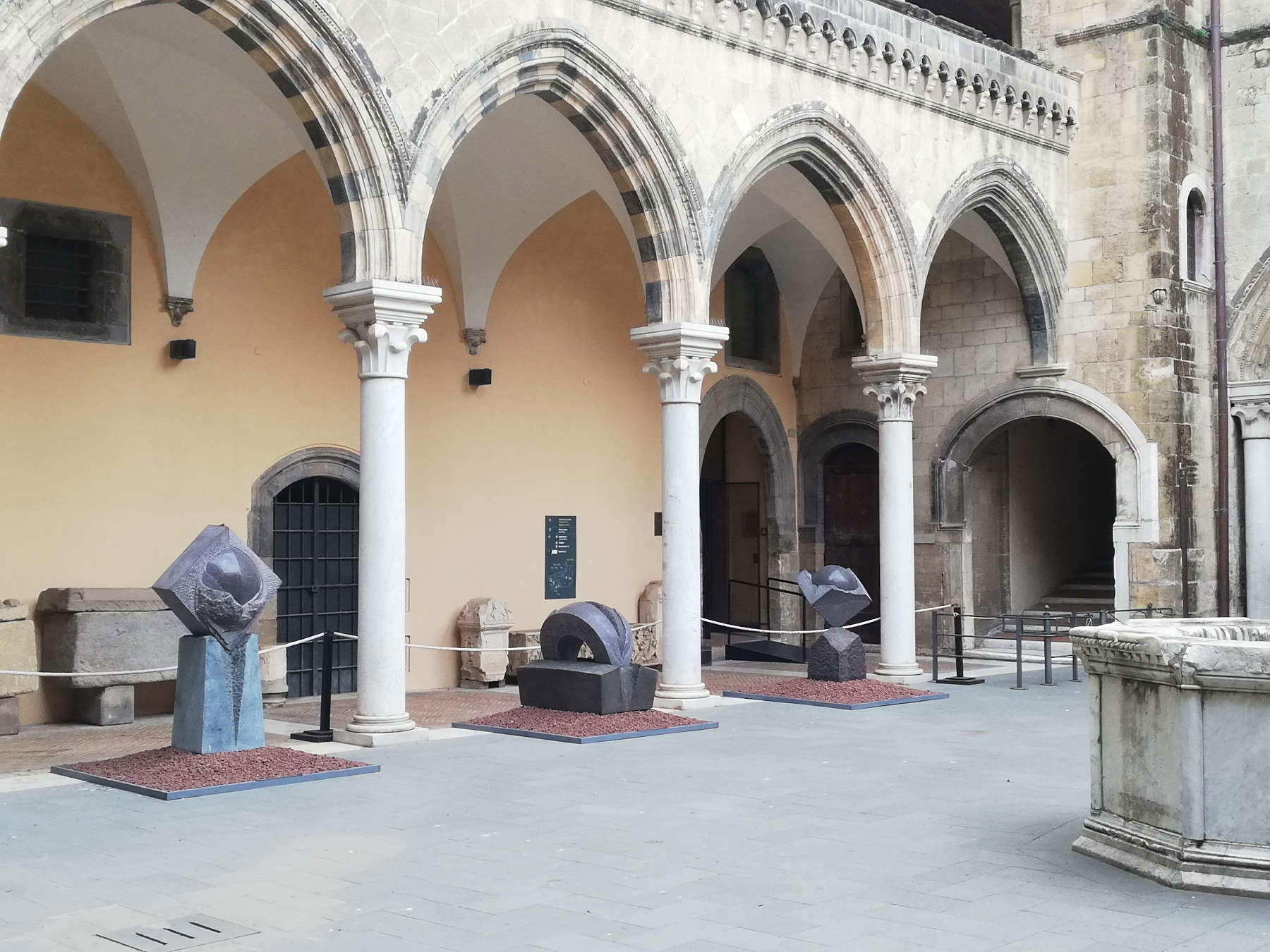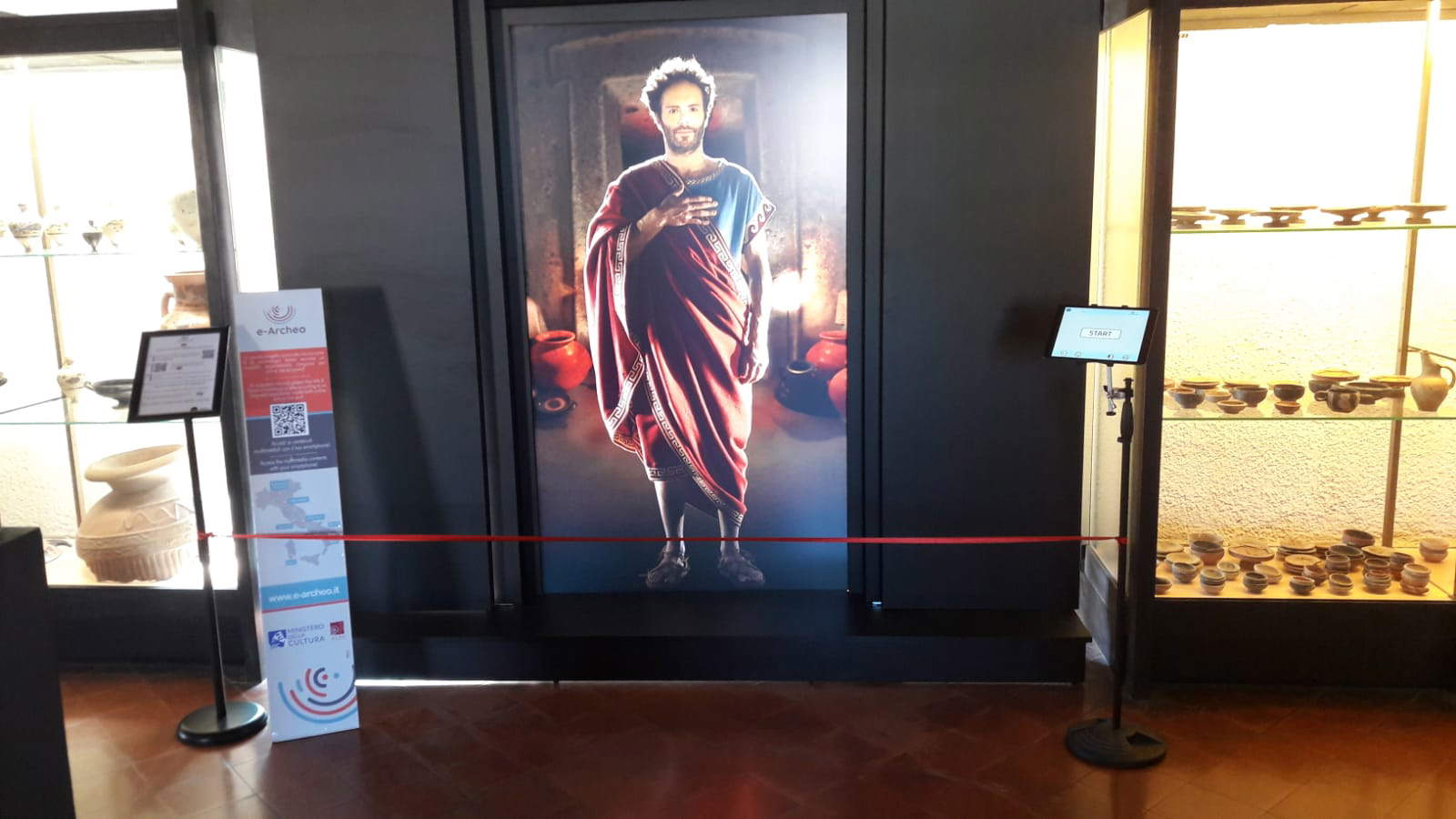The Cerveteri-Tarquinia Archaeological Park became autonomous as of 2021. Since then, thanks to autonomy, this important complex, which brings together the Cerite National Archaeological Museum, the National Archaeological Museum in Tarquinia, and the sites of the Banditaccia Necropolis in Cerveteri and the Monterozzi Necropolis in Tarquinia, has achieved significant results that were not possible before. Here’s how and why. We talk about it with the park’s director, Vincenzo Bellelli, in this interview by Noemi Capoccia.

NC. This year marks the Centennial of the National Archaeological Museum of Tarquinia. To what is the reason for the choice of issuing a commemorative stamp? To celebrate the 100th anniversary of its founding, has the park thought of special initiatives such as temporary exhibitions or the like?
VB. The stamp was issued on May 11, the date that kicked off the centennial celebrations. The choice of the postage stamp, although it may seem outdated in the digital age, has a very strong symbolic meaning: although the postal service is no longer used as much as before because of the advent of the Internet, the stamp represents an official act that permanently fixes a cultural event, with a precise date and an iconic image that enter the collective imagination. It was issued by the Ministry of Business and Made in Italy in collaboration with the Italian Post Office, and we thought it was an interesting initiative to officially celebrate the Centennial. The inauguration opened a series of events that will continue throughout the summer and beyond, with a busy calendar that is still being defined. Some initiatives are already underway, most notably a temporary sculpture exhibition-Polyhedrogenesmosis, with works by master Claudio Capotondi-set up at the museum’s cloister and loggia. In addition, there is a program of music and dance performances organized by the City of Tarquinia with our patronage within our venues. Finally, extraordinary evening openings of the museum are planned throughout the summer, and at the end of the year there will be a pleasant surprise: the “closing” of the celebrations with initiatives centered on the history of Palazzo Vitelleschi.
Speaking of night openings, do you think opening museums in the evening hours can be a good initiative? What do you expect from visitors?
Our Park includes both outdoor archaeological areas and museums located within the historic centers of tourist cities. Those on vacation move around a lot in the summer months, from June to August, when there is a greater inclination to participate in cultural initiatives, especially when they take place outdoors and the heat gives some respite. Therefore, it is also necessary to consider climatic needs. For this reason, we have decided to make our services available even after the normal museum closure, when the temperature is cooler. We have organized many extraordinary openings, accompanied by events such as guided tours, book presentations, dance performances and concerts.
The archaeological parks of Cerveteri and Tarquinia have recently become autonomous (2021). In terms of management, what changes have been made to the sites?
The organizational structure and management methods of the park have changed. Before, being parts of a peripheral body of the ministry, the sites had no financial autonomy. Now, on the other hand, the Park enjoys scientific, financial, and management autonomy while being subject to the supervising directorates of the Ministry. This structural change allows the Park to be able to choose its own way independently in all areas: protection, enhancement, and communication. From a practical point of view, before, our archaeological areas and museums were managed from Rome through officials who went on site occasionally. The Regional Museums Directorate, and even earlier the Polo and the Archaeological Superintendency, managed the sites “remotely,” from Rome. This entailed management difficulties inherent in “remote” management. Now we have offices in both Tarquinia and Cerveteri, allowing direct management of all issues, from maintenance to enhancement. Finally, there is a closer relationship with local governments, and this facilitates collaboration and timely resolution of issues affecting the Park and its visitors.






How has autonomy provided a new way of experiencing the relationship with the public?
As I said, thanks to the increased autonomy, the Park can reinvest its resources in a discretionary way. We have embarked on a self-knowledge journey, conducting self-assessments and evaluating our audiences. Now, with our own resources and autonomy we can allocate funds to improve the overall cultural offerings, educational services and accessibility of the various Park sites. This greater autonomy allows us to better analyze and respond to visitor needs, and all of this marks a big difference from the past.
What changes and results have you been able to notice from the beginning of your directorship to the present in all museum spaces and archaeological parks?
With autonomy, we have been able to invest a lot of resources on our museums and archaeological areas and achieve significant results, especially in planned maintenance plans, which are the main challenge for a complex institution like ours. The main objective is to ensure the conservation of the heritage received under our management, addressing the critical issues concentrated in the painted tombs of Tarquinia and the tuff architecture of Cerveteri. Thanks to the institution of autonomy, we have been able to significantly affect the expansion of areas open to the public and the systematization of maintenance plans. As of today, the care of archaeological areas and museum sites is more rational and organized. In addition, with regard to research projects, we have established a number of collaborations with third-party entities, mainly universities and research institutes, both Italian and foreign, which support us in knowledge, conservation and enhancement activities. The main difference from the past is also evident in the overall decorum of the sites, maintenance of greenery and conservation of the hypogea. We have allocated substantial resources to control the health of the heritage, making it more usable.
The park also manages the Banditaccia Necropolis. What are the main features of the Banditaccia Necropolis in Cerveteri and why are they considered the largest in the ancient world?
The peculiarity of the Banditaccia site is that it is configured as a real Archaeological Park. The difference between an archaeological area and an Archaeological Park lies in the greater interaction between the environmental element and the artifacts, that is, the archaeological monuments. This combination is enhanced at the Banditaccia site, where one can find a rich vegetation, both spontaneous and planted by man. The administration, over time, has set up the site as a huge outdoor garden. The extent, amounting to several hectares, of the necropolis makes it usable on several levels. It can be experienced as an archaeological area, but also as a nature park, with a real ecosystem. It is a pleasant place to spend time, even several hours, with friends, family or colleagues. This characteristic was well captured by the UNESCO Commission when, in 2004, it included the Etruscan necropolis of Cerveteri and Tarquinia on the World Heritage List. UNESCO recognized the universal value of these remains, both as historical monuments and as elements of a unique ecosystem. Cerveteri, from this point of view, is really special.
What kinds of decorations were present in the burial chambers of the Cerveteri and Tarquinia necropolises excavated during the 7th century B.C.? And why?
There is a notable difference between the decorative practices of the Cerveteri and Tarquinia necropolises. In Cerveteri, initially, in the 7th century, there was a propensity to cover the walls of the hypogea with paintings, a usage that was lost over time for various reasons. Subsequently, the decorative function was mainly entrusted to sculpture, with bas-relief or full-round decorations. In Tarquinia, however, the pictorial medium remained predominant. Although not all burial chambers are decorated, a fairly substantial percentage have frescoed walls: the decorative choices reflect significant cultural differences. In Tarquinia, there was a preference for the creation of figurative cycles made with the pictorial medium, giving rise to funerary art that had a specific use in the space of the tomb. This pictorial tradition in Tarquinia is well established from the 7th century to the 2nd century BCE.



Among its collections, the Cerite National Archaeological Museum has an installation called e-Archeo HI®. What exactly does it consist of?
It is a state-of-the-art multimedia installation. It is a very simple and sophisticated system at the same time: with a keypad that you can operate with your fingers, you can activate a dialogue with a life-size hologram, a fictitious character imagined to represent an Etruscan from Cerveteri who lived two thousand years ago. The installation is very modern and well made, thanks to the advice of several university institutes and the CNR. It conveys even complex content, which we call “second level,” in a simple and spontaneous way that is particularly appreciated by the younger generation. It is not a traditional way of communicating information, but an effective approach that puts the visitor at the center of the experience. Using the keypad, the visitor can activate specific paths and listen to the holographic guide talk about certain works housed in the museum or aspects of Etruscan civilization. The installation is completed with the museum’s digital display cases located on the ground floor, which were created by Piero Angela and Paco Lanciano about fifteen years ago. They were state-of-the-art at the time; we found them disused and reactivated them, updating the software. Now they are fully integrated into the museum’s layout and are one of its major attractions.
Can we therefore speak of a new approach to new technologies for understanding exhibition spaces?
Yes, we were among the first to implement through these technological innovations, the ability to narrate the evidence of Etruscan art. The holographic system is only the first step of a path: we are planning further interventions and upgrades in the archaeological area as well. This is a road we follow with great interest and intend to continue on.
What is the virtual tour introduced in Tarquinia? What is its objective?
We are talking about an installation that allows through an illusionistic mode, to enjoy the visit of the hypogea even when it is not possible to visit them in person. It is an additional opportunity that allows visitors to virtually explore the tombs, following an imaginary itinerary that they can select independently, from the comfort of their homes or from a location in the museum. This virtual experience does not replace the on-site visit, which remains irreplaceable, but increases the accessibility of the painted tombs, making it possible to enjoy their heritage from a distance.
What are the main and future goals of the archaeological museums and parks under your direction between now and the end of the year?
We have embarked on a very ambitious but at the same time sustainable path to increase the accessibility of our sites. What we are really interested in is making our sites more vital and inclusive, with quality initiatives. Our goal is to bring more and more people closer to our sites, including those who may not have had the opportunity to visit until now, without ever giving up the pedagogical mission of a cultural institution like the museum. Accessibility is therefore our main priority. We want to raise awareness of our cultural and historical realities, attract more and more visitors, and stimulate positive developments on the ground so that the local community can benefit from the Park’s activities in terms of economic and cultural development. Between now and the end of the year and in the near future, we will focus on these goals and work to improve the accessibility of our sites.
Warning: the translation into English of the original Italian article was created using automatic tools. We undertake to review all articles, but we do not guarantee the total absence of inaccuracies in the translation due to the program. You can find the original by clicking on the ITA button. If you find any mistake,please contact us.